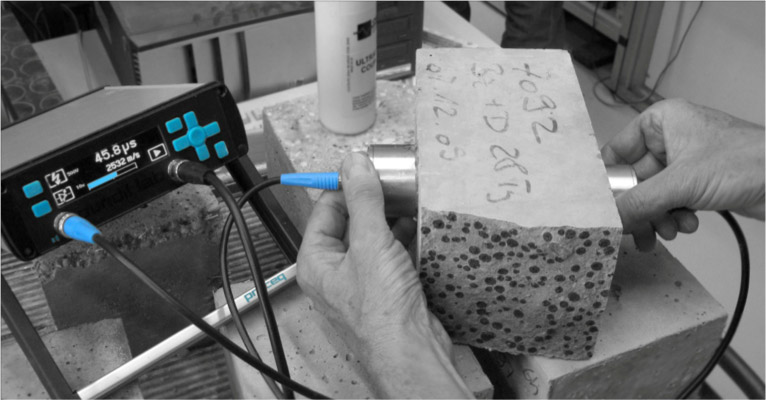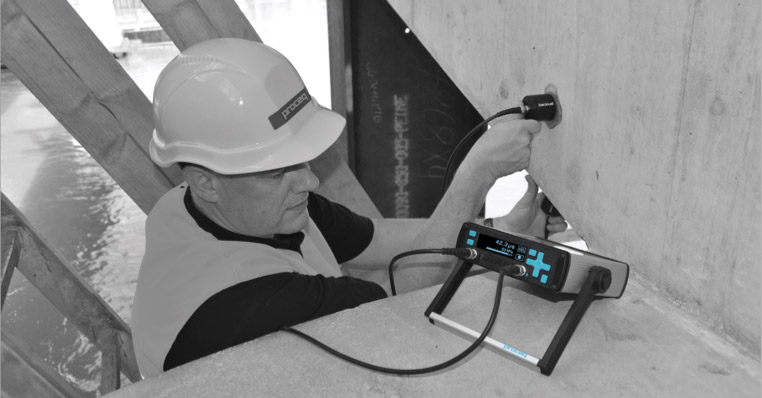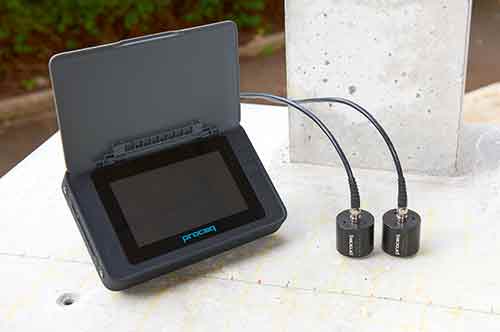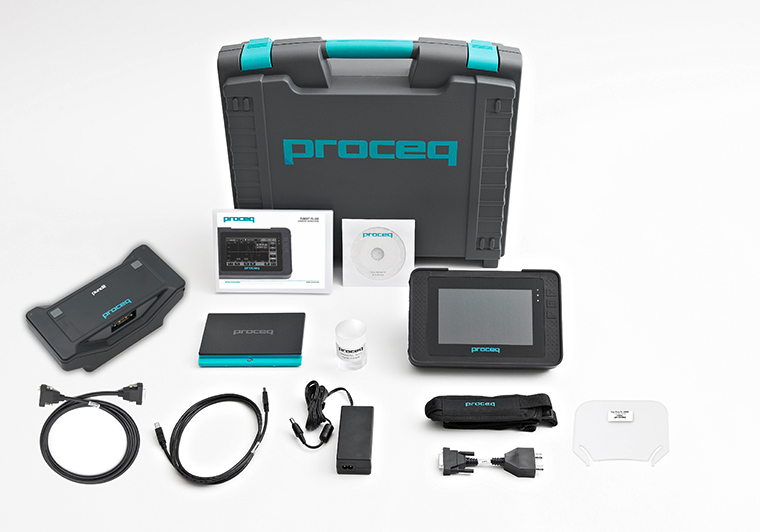Ultrasonic Pulse Velocity (UPV) testing of concrete is based on the pulse velocity method to provide information on the uniformity of concrete, cavities, cracks and defects. The pulse velocity in a material depends on its density and its elastic properties which in turn are related to the quality and the compressive strength of the concrete. It is therefore possible to obtain information about the properties of components by sonic investigations.
Proceq offers the most versatile instrument for ultrasonic Pulse Velocity (UPV) testing of concrete – the Pundit Lab, the newest member of the famous Pundit family. Along with the traditional transit time and pulse velocity measurement, this ultrasonic concrete testing equipment offers path length measurement, perpendicular crack depth measurement and surface velocity measurement.

The Pundit Lab is an ultrasonic pulse velocity (UPV) test instrument which is used to examine the quality of concrete. It features online data acquisition, waveform analysis and full remote control of all transmission parameters. Along with the traditional transit time and pulse velocity measurement, the ultrasonic test equipment Pundit Lab offers path length measurement, perpendicular crack depth measurement and surface velocity measurement. Optimized pulse shaping gives greater transmission range at lower voltage levels. This, coupled with automated combination of the transmitter voltage and the receiver gain, ensures an optimum received signal level, guaranteeing accurate and stable measurements. An integrated waveform display allows manual triggering of the received waveform.

The Pundit Lab is an ultrasonic pulse velocity (UPV) test instrument which is used to examine the quality of concrete. The Pundit Lab+ comes with an extended feature set, making it particularly suitable for on-site measurements. Naturally it contains all of the features of the Pundit Lab. The new functions include, an integrated gain stage making an external amplifier unnecessary when using long cables or exponential transducers, a real time stamp for recording the time of measurement, a data review list that allows previous measurements to be viewed on site, and a correlation to compressive strength either directly from pulse velocity or in combination with a rebound value (SONREB method).

The Pundit PL-200 is a best-in-class Ultrasonic pulse velocity (UPV) test instrument to examine the quality of concrete and other materials such as rock, wood and ceramics.
It provides an extended range of measurement modes and superior features for on-site testing: Assess the concrete uniformity using standard A-Scans, Line Scans and the new Area Scan functionality, estimate the compressive strength of concrete or measure the surface velocity and the depth of perpendicular cracks. The Data Logging measurement mode allows the automation of long term measurements.
The intelligent software supports directly accessible settings in real time from the measuring screen. The highest resolution and sharpest image available in the market allows best possible analysis of the measured waveforms.
Proceq offers an extensive range of transducers for the Pundit PL-200 providing highest accuracy and a proven field track record.

The Pundit PL-200PE employs state-of-the-art pulse echo technology to extend the ultrasonic application to objects where access is restricted to a single side.
The measurement process is greatly assisted by Proceq innovations such as advanced echo tracking and automatic estimation of Pulse Velocity. The A-Scan Mode allows direct analysis of the raw signal and the real-time B-Scan Mode provides a cross-sectional view perpendicular to the scanning surface. The Area Scan enables slab thickness uniformity testing in grid patterns.
This allows the user to determine the slab thickness and to localize subsurface deformities such as voids, pipes, delaminations and honeycombing.
Control buttons and optical feedback directly on the probe increase measurement efficiency and make to instrument even more user-friendly.